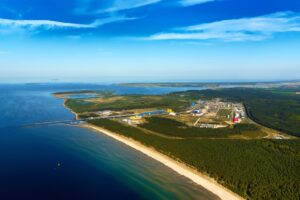Verdagy is engineering the world’s largest membrane-based electrochemical cells to drive down the investment and energy required for generating industrial hydrogen. The company’s eDynamic™ process is designed to rapidly change operating parameters to integrate well with renewables and capture the most optimal input energy pricing. Verdagy has demonstrated its ability to solve electrolysis challenges for industrial markets through rapid scaling, evolving first with its original lab cells, then pilot cells, followed by the 1,000-hour run demonstration, and now the commissioning of its 500 kW electrolyzer module.
The three 28,500 cm2 cells in the newly launched commercial module produce hydrogen at a rate of >3.0 kg/hr per cell, validating their patented cell architecture and design that enables high current densities in a large-format cell. This is said to represent industry-leading current density operations that are higher than traditional and state-of-the art alkaline water electrolyzers, exceeding expectations for performance.
The launch of their commercial cell was preceded by a 1,000-hour run on a 20 kW, 3,200 cm2 cell in a production environment at Verdagy’s pilot plant in Moss Landing, CA. The 1,000-hour run demonstrated lifetime durability and minimized risk as they scaled up to the commercial electrolyzer module. Through multiple runs, Verdagy validated its cell design, optimized their components, and established process parameters to package their cells for commercial use.
The company is designing for efficiency and affordability, with a wide dynamic operating range. The large dynamic range offers higher efficiencies at lower current densities and greater productivity at higher current densities. Without dependency on costly noble metals such as platinum and titanium, and due to the very large size and ability to run at high current densities, Verdagy claims to achieve the lowest Capex in the industry and the lowest H2 production costs when coupled with renewable energy.






